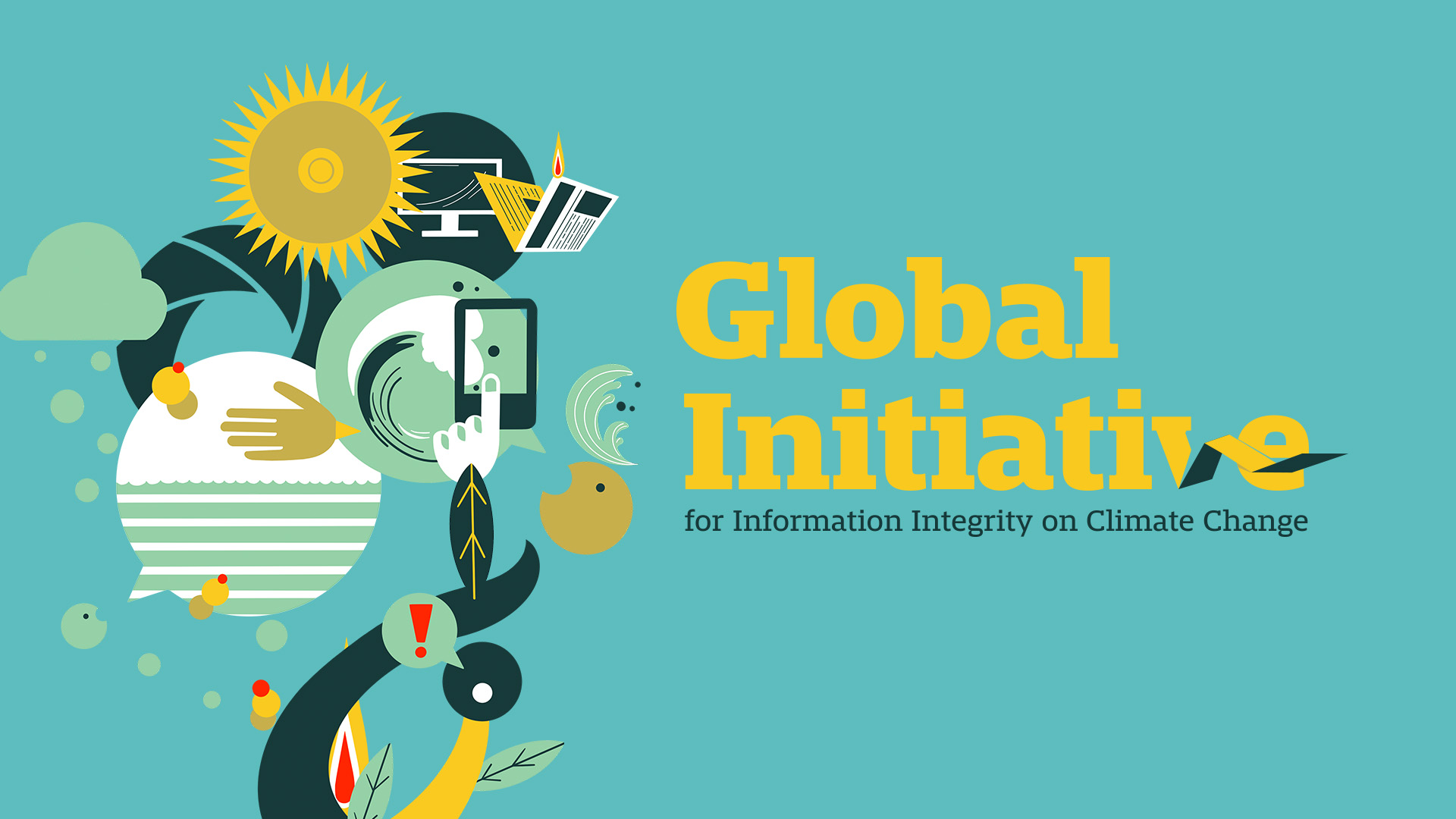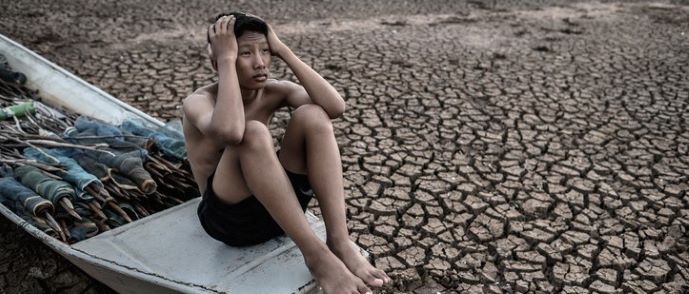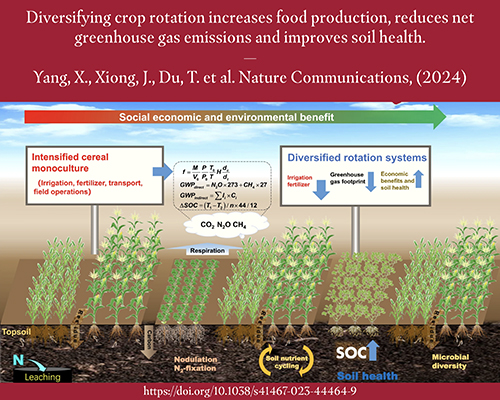The Urgency of Climate Change in the Context of Sustainable Development
An analysis of climate change necessitates a foundational distinction between weather and climate. Weather describes short-term, local atmospheric conditions, whereas climate represents long-term regional or global averages in temperature, humidity, and precipitation. Climate change, therefore, constitutes a significant and lasting alteration in these average patterns. The physical manifestations of this change, including heatwaves, sea-level rise, and extreme precipitation events, pose a direct and severe threat to communities and ecosystems globally. These impacts critically undermine the achievement of the 2030 Agenda for Sustainable Development, challenging progress across numerous Sustainable Development Goals (SDGs).
While Earth has undergone natural warming and cooling cycles over millennia, the current rate of change is unprecedented and primarily anthropogenic. The rapid acceleration of global temperature rise is a direct consequence of human activities, making climate change a central challenge for global policy and sustainability. Addressing it is the core of SDG 13 (Climate Action), but its cascading effects also jeopardize:
- SDG 1 (No Poverty) and SDG 2 (Zero Hunger), as floods and droughts destroy livelihoods and agricultural yields.
- SDG 6 (Clean Water and Sanitation), through impacts on water availability and quality.
- SDG 11 (Sustainable Cities and Communities), by increasing the vulnerability of urban areas to extreme weather events.
Scientific Principles of Climate Change
The Greenhouse Effect and Global Warming
The Earth’s climate is regulated by the greenhouse effect, a natural process where the atmosphere traps a portion of the sun’s energy, maintaining temperatures suitable for life. This atmospheric balance is maintained by greenhouse gases (GHGs) which, in natural concentrations, are essential. However, an excess of these gases, produced by human activities, thickens the atmospheric blanket, trapping excess heat and causing global warming.
The primary GHGs responsible for this enhanced warming include:
- Carbon Dioxide (CO2)
- Methane (CH4)
- Nitrous Oxide (N2O)
This anthropogenic warming disrupts natural climate cycles. A critical feedback loop is the albedo effect, where melting polar ice reduces the Earth’s capacity to reflect solar radiation. Darker ocean and land surfaces absorb more heat, further accelerating warming and ice melt. This vicious cycle intensifies global warming and drives the broader spectrum of climate change, affecting planetary health and human well-being, which are central to SDG 3 (Good Health and Well-being), SDG 14 (Life Below Water), and SDG 15 (Life on Land).
Climate Impacts on Key Global Systems and Sustainable Development Goals
Ocean Warming and its Threat to SDG 14: Life Below Water
The world’s oceans, covering over 70% of the planet’s surface, have absorbed more than 90% of the excess heat from GHG emissions. This immense heat absorption has moderated atmospheric temperature increases but has led to significant ocean warming. The Intergovernmental Panel on Climate Change (IPCC) projects the rate of ocean warming to at least double by 2100. This trend has profound consequences:
- Rising Sea Surface Temperatures (SST): Increased SST fuels more intense tropical storms and alters weather patterns, leading to extreme precipitation or drought conditions on land.
- Altered Ocean Circulation: Warming and freshwater influx from melting ice can slow critical currents like the Atlantic Meridional Overturning Circulation (AMOC), which regulates climate in North America and Europe, leading to extreme weather events.
- Ecosystem Collapse: Warmer waters cause coral bleaching and facilitate the spread of pathogens, destroying critical marine habitats.
These impacts represent a direct assault on marine biodiversity and the stability of ocean ecosystems, fundamentally undermining the targets of SDG 14 (Life Below Water) and threatening the economies and food security of coastal communities.
Ocean Acidification and its Impact on Marine Life
In addition to absorbing heat, oceans have absorbed approximately 30% of anthropogenic CO2 emissions. This absorption causes a chemical reaction that produces carbonic acid, lowering the ocean’s pH in a process known as ocean acidification. This increasing acidity poses a severe threat to marine life, particularly organisms with shells and skeletons made of calcium carbonate, such as corals, plankton, and shellfish. As acidic water dissolves these structures, the survival of these species is jeopardized, triggering cascading effects throughout the marine food web. This chemical disruption of ocean ecosystems is another critical challenge to achieving SDG 14 (Life Below Water).
Anthropogenic Drivers and their Relation to SDGs
Human Activities as the Primary Source of Emissions
The overwhelming source of excess GHG emissions over the past century has been human activity. The primary activities driving climate change are directly linked to core components of the global economy, highlighting the need for a systemic transition aligned with the SDGs.
- Fossil Fuel Combustion: The burning of coal, oil, and natural gas for electricity, heating, and transportation is the largest source of CO2 emissions. This underscores the urgent need to transition toward the goals of SDG 7 (Affordable and Clean Energy) and develop sustainable infrastructure as outlined in SDG 9 (Industry, Innovation and Infrastructure).
- Industrial Processes and Agriculture: Manufacturing, mining, and farming release significant amounts of CO2, CH4, and N2O. Reforming these sectors is essential for achieving SDG 12 (Responsible Consumption and Production) and SDG 2 (Zero Hunger) sustainably.
- Waste Decomposition: Organic waste in landfills releases methane, linking waste management practices to climate change and the goals of SDG 11 (Sustainable Cities and Communities).
Land Use Change and the Impairment of SDG 15: Life on Land
Natural ecosystems such as forests, wetlands, and peatlands function as vital carbon “sinks,” absorbing and storing vast amounts of atmospheric carbon. However, human activities, particularly deforestation and the conversion of natural landscapes for agriculture or development, destroy these sinks. This destruction not only prevents the future sequestration of carbon but also releases centuries of stored carbon back into the atmosphere, exacerbating climate change. This degradation of terrestrial ecosystems is a direct contradiction to the objectives of SDG 15 (Life on Land), which calls for the protection, restoration, and sustainable use of forests and other ecosystems.
SDGs Addressed in the Article
-
SDG 13: Climate Action
The entire article is centered on climate change, its causes (human-induced greenhouse gas emissions), and its physical effects (global warming, sea-level rise, extreme weather). It directly addresses the core issues of SDG 13, which urges action to combat climate change and its impacts.
-
SDG 14: Life Below Water
The article dedicates significant sections to “Ocean Warming” and “Ocean Acidification.” It explains how oceans absorb excess heat and CO2, leading to rising temperatures, coral bleaching, disturbances to marine ecosystems, and threats to marine organisms with calcium carbonate shells. This directly relates to protecting marine life and ecosystems.
-
SDG 15: Life on Land
The text identifies “deforestation” and the “destruction of… ecosystems” like forests and wetlands as key human activities contributing to climate change. It explains that these ecosystems are vital “carbon sinks” and their destruction releases stored carbon, exacerbating the problem. This connects to the goal of protecting terrestrial ecosystems.
-
SDG 7: Affordable and Clean Energy
The article repeatedly cites the “burning of fossil fuels” (coal, oil, natural gas) for “electricity” and “heating” as the largest source of GHG emissions. This highlights the problem that SDG 7 aims to solve by promoting a shift towards clean and renewable energy sources.
-
SDG 9: Industry, Innovation and Infrastructure
The text mentions that GHGs are emitted from “manufacturing” and “certain industrial processes.” This points to the need for sustainable industrialization and infrastructure, a key component of SDG 9.
-
SDG 12: Responsible Consumption and Production
The article links GHG emissions to the “decomposition of organic waste in landfills.” This issue falls under the purview of SDG 12, which promotes sustainable consumption patterns and waste reduction.
Specific SDG Targets Identified
-
SDG 13: Climate Action
- Target 13.1: Strengthen resilience and adaptive capacity to climate-related hazards and natural disasters in all countries. The article mentions the physical effects of climate change that communities must adapt to, such as “heatwaves, sea level rise, and heavy rainfall,” and the resulting impacts like “floods and droughts.”
- Target 13.3: Improve education, awareness-raising and human and institutional capacity on climate change mitigation, adaptation, impact reduction and early warning. The article itself serves as an educational resource, explaining the science behind climate change, the greenhouse effect, and human influence, thereby contributing to awareness-raising.
-
SDG 14: Life Below Water
- Target 14.2: By 2020, sustainably manage and protect marine and coastal ecosystems to avoid significant adverse impacts. The article directly discusses this by describing “disturbances to marine ecosystems,” the “loss of essential habitats for marine fish and mammals,” and the “loss of coral reef habitat from coral bleaching.”
- Target 14.3: Minimize and address the impacts of ocean acidification, including through enhanced scientific cooperation at all levels. The article has a dedicated section on “Ocean Acidification,” explaining how absorbed CO2 “increases the acidity (lowers the pH) of ocean water” and harms marine life like “corals, plankton, shellfish.”
-
SDG 15: Life on Land
- Target 15.2: By 2020, promote the implementation of sustainable management of all types of forests, halt deforestation, restore degraded forests and substantially increase afforestation and reforestation globally. The article explicitly names “deforestation” as a human activity that increases atmospheric CO2 concentrations by destroying natural carbon sinks.
Indicators Mentioned or Implied
-
For SDG 13 (Climate Action)
- Indicator (Implied): Total greenhouse gas emissions per year (Indicator 13.2.2). The article’s central theme is the effect of “excess emissions of GHGs from human activities,” specifically mentioning “carbon dioxide (CO2), methane (CH4), and nitrous oxide (N20).” Measuring these emissions is the primary way to track progress.
- Indicator: Trends in global average surface temperature. The article provides a specific data point: “Trends in global average surface temperature between 1990 and 2021 show an increase of up to one degree Fahrenheit per decade for most of the planet.” This serves as a direct measure of global warming.
-
For SDG 14 (Life Below Water)
- Indicator: Average marine acidity (pH) (Indicator 14.3.1). The article directly discusses the mechanism for this indicator by stating that “CO2 reacts with ocean water to produce carbonic acid, which increases the acidity (lowers the pH) of ocean water.” It also mentions a related metric: “The oceans have taken up almost 30% of total atmospheric CO2 emissions since 1980.”
- Indicator: Ocean temperature. The article provides several specific measurements that can be used as indicators of ocean warming:
- “Coastal temperatures along the northeastern U.S. increased by 0.06°F per year from 1982 to 2016.”
- “Ocean temperatures over the Northeastern continental shelf are expected to warm by up to 0.76°F per decade by 2070.”
- “The oceans have taken up more than 90% of excess heat from the atmosphere.”
-
For SDG 15 (Life on Land)
- Indicator (Implied): Forest area as a proportion of total land area (Indicator 15.1.1). The article’s mention of “deforestation” as a key driver of increased CO2 implies that tracking the change in forest area is a relevant indicator for measuring the health of these carbon sinks.
Summary Table of SDGs, Targets, and Indicators
| SDGs | Targets | Indicators |
|---|---|---|
| SDG 13: Climate Action | 13.1: Strengthen resilience and adaptive capacity to climate-related hazards (e.g., heatwaves, floods, droughts). | Trends in global average surface temperature (increase of up to 1°F per decade mentioned). |
| 13.3: Improve education and awareness-raising on climate change. | Total greenhouse gas emissions (CO2, CH4, N2O) from human activities (implied as the core metric to track). | |
| SDG 14: Life Below Water | 14.2: Sustainably manage and protect marine and coastal ecosystems (e.g., from coral bleaching). | Rate of ocean warming (e.g., 0.06°F per year along the northeastern U.S. from 1982-2016). |
| 14.3: Minimize and address the impacts of ocean acidification. | Average marine acidity (pH), driven by ocean uptake of atmospheric CO2 (mentioned as ~30% since 1980). | |
| SDG 15: Life on Land | 15.2: Halt deforestation and restore degraded forests. | Change in forest area (implied by the mention of “deforestation” as a source of CO2 emissions). |
| SDG 7: Affordable and Clean Energy | (Implied) Shift from fossil fuels to clean energy sources. | Dependence on fossil fuels for electricity and heating (mentioned as a primary source of emissions). |
Source: dec.ny.gov







